- Home
- Bill James
The Principals
The Principals Read online
Contents
Cover
A Selection of recent titles from Severn House by Bill James
Title Page
Copyright
Chapter One
Chapter Two
Chapter Three
Chapter Four
Chapter Five
Chapter Six
Chapter Seven
Chapter Eight
Chapter Nine
Chapter Ten
Chapter Eleven
Chapter Twelve
Chapter Thirteen
Chapter Fourteen
Chapter Fifteen
Chapter Sixteen
Chapter Seventeen
Chapter Eighteen
Chapter Nineteen
Chapter Twenty
Chapter Twenty-One
Chapter Twenty-Two
Chapter Twenty-Three
Chapter Twenty-Four
Chapter Twenty-Five
Chapter Twenty-Six
Chapter Twenty-Seven
Chapter Twenty-Eight
Chapter Twenty-Nine
Chapter Thirty
Chapter Thirty-One
Chapter Thirty-Two
Chapter Thirty-Three
Chapter Thirty-Four
A Selection of recent titles from Severn House by Bill James
BETWEEN LIVES
DOUBLE JEOPARDY
MAKING STUFF UP
LETTERS FROM CARTHAGE
OFF-STREET PARKING
FULL OF MONEY
WORLD WAR TWO WILL NOT TAKE PLACE
NOOSE
SNATCHED
THE PRINCIPALS
The Harpur and Iles Series
VACUUM
UNDERCOVER
PLAY DEAD
DISCLOSURES
BLAZE AWAY
FIRST FIX YOUR ALIBI
THE PRINCIPALS
Bill James
This ebook is copyright material and must not be copied, reproduced, transferred, distributed, leased, licensed or publicly performed or used in any way except as specifically permitted in writing by the publishers, as allowed under the terms and conditions under which it was purchased or as strictly permitted by applicable copyright law. Any unauthorised distribution or use of this text may be a direct infringement of the author’s and publisher’s rights and those responsible may be liable in law accordingly.
First published in Great Britain and the USA 2016 by
SEVERN HOUSE PUBLISHERS LTD of
19 Cedar Road, Sutton, Surrey, England, SM2 5DA.
This eBook edition first published in 2016 by Severn House Digital
an imprint of Severn House Publishers Limited
Trade paperback edition first published
in Great Britain and the USA 2016 by
SEVERN HOUSE PUBLISHERS LTD
Copyright © 2016 by Bill James.
The right of Bill James to be identified as the author of this work has been asserted in accordance with the Copyright, Designs & Patents Act 1988.
British Library Cataloguing in Publication Data
A CIP catalogue record for this title is available from the British Library.
ISBN-13: 978-0-7278-8642-2 (cased)
ISBN-13: 978-1-84751-743-2 (trade paper)
ISBN-13: 978-1-78010-808-7 (e-book)
Except where actual historical events and characters are being described for the storyline of this novel, all situations in this publication are fictitious and any resemblance to living persons is purely coincidental.
This ebook produced by
Palimpsest Book Production Limited,
Falkirk, Stirlingshire, Scotland
ONE
2014
Of course, Martin Moss realized there was bound to be a load of bitchy spite, top-notch rattiness and abiding malevolence about the statue idea. Hang on, hang on. Update. It began as about the statue idea – a statue idea, singular – but soon became about the statues idea, plural, two of them: binary, a term well-known in higher education. Moss thought the second proposed statue could be regarded in a sense as the baby of the first, by a kind of in vivo rather than in vitro fertilization: out of a living thing, not a test tube. Official minutes, e-mails and memos about the two projects came to be referred to as ‘Statue One (L.C.)’ and ‘Statue Plus (V.T.)’. It was thought that to call the later scheme ‘Statue Two’ might be to confer on Statue One a hint of precedence – precedence not just time-wise but as to status. No way.
Moss could swiftly and simply describe the origins of the ‘Statue One’ concept. Those bracketed letters, ‘L.C.’ were the initials of Lawford Chote, former principal of Sedge University (founded 1885, motto ‘Onward Friends Of Learning’) during the period of cuts and stringent financial restraints on public sector spending by the third Thatcher Conservative government. Chote had resisted these restraints and cuts and defiantly continued on a programme for Sedge of expansion and expense and galloping debt. Onward friends of learning. He had apparently claimed somewhere that the word ‘Positivism’ was tattooed on a part of his body not obvious in day-to-day circumstances. He also claimed there’d been plenty of room for an exclamation mark after it, as suggested by the lady tattooist, but Chote had declined this saying it would imply that his positivism was something startlingly unusual, whereas he considered it routine; as natural to him and inevitable as breathing. But, owing to this inveterate free-spending and positivism, with or without an exclamation mark, Sedge in the late 1980s had drifted very, very close to bankruptcy, ruin, total extinction. Onward friends of learning, over the lemming cliff. Martin Moss didn’t enjoy thinking about it even so long after.
Utterly against Lawford Chote’s wishes, an emergency troop of auditors from the Department of Education and Science had moved in and ultimately, as a result of their findings, it was arranged for Chote to be removed eternally from post. Onward, Chote, to anywhere but here. Half a dozen Treasury people also came from London and assumed temporary control of the university’s finances to stop the money troubles getting even worse, the debt vaster. Once some sort of stability had been secured, they would recommend the payment from state funds of a special and hefty salvation grant.
When Sedge seemed likely to die, Chote was described to Moss by a colleague in the English Department as ‘the only man in the world who has single-handedly destroyed a university, a university more than a hundred years old and named after one of its revered and famed Victorian founders.’ Chote came in for a fair whack of such vilification and abuse. His drinking, rudeness, half-baked witticisms and gobby, turbulent aggression didn’t help his case much.
However, that was 1987. Today, Sedge thrived. Moss was still part of it. That one-off salvation grant, plus a government-driven reshaping of the university’s management set-up had worked, and worked so successfully that Sedge might soon be invited to join the select clique of British universities known as the Russell Group, including Oxbridge. On account of this remarkable progress, some influential voices had begun to ask whether Dr Lawford Chote might have been a long-term visionary rather than a reckless, half-daft, giddy, blundering prodigal. Would Sedge be what it was now if Dr Chote hadn’t given it a violent, perilous, necessary push-start? Had he shown admirable spirit, doggedness and bravery in standing up to Mrs Thatcher and her philistine, vandal cronies? Had his badger’s arse roughness and loud contempt for his enemies been the only means available to oppose Rightist political attempts to curtail the spread of university opportunity for all young people regardless of class and/or low family income? It wasn’t as though he stood alone in trying to repulse Thatcherism. Oxford University refused by a plump majority to award her an honorary degree in civil law because of her attacks on research funding. This, despite the fact that she had been a chemistry und
ergraduate at Oxford as a young woman. And Martin Moss himself had wondered at the time whether Chote’s objectives were right, but his ways of trying to reach them sadly clumsy and a turn-off.
So, anyhow, Sedge admirably, gloriously resurgent. And so, also, a statue proposal from the senate and high board and the education press amounted to something more than a formal impulse to commemorate a past chieftain. It was certainly that, yes, but the proposal contained, too, a notable element of apology, of admission that Lawford Chote might have been unfairly punished, even victimised. The statue would be a tangible symbol of regret and of the wish to compensate for timorous, short-sighted error; perhaps, in fact, a symbol of belated love.
Martin Moss still taught and researched at Sedge, but not many other participants in this 1987 crisis were still around: retired, dead, or gone away to other appointments. The contritional statue had to be a corporate matter. It was Sedge itself bringing a plea for forgiveness. As someone on the high board had said, if the statue had a caption plaque, it ought to read: ‘They done you wrong, Lawf,’ or however that came out in Latin. Leftist members of the present senate and high board – a fair number – cherished retrospective loathing for Margaret Thatcher – as they would have for Mussolini or Genghis Kahn – and were keen to deliver any insult and posthumous kick up the jacksy, such as the statue scheme. Moss wasn’t sure about his own attitude yet.
But all this centred only on Statue One. In 1987 the city had two universities, each of them touched by the crisis. And it had two principals, each of them touched by the crisis: Dr Lawford Chote and Dr Victor Tane. Charter Mill and its campus lay a couple of miles away in grounds that still contained the carefully looked-after, historic watermill which had given the university its name. At Sedge, though, it was usually spoken of as ‘the leisure centre,’ not because the staff and students were lazy but because one of its degree courses was Hotel Management and Leisure Pursuits. Charter Mill had been created from a previous polytechnical college in the 1960s. It offered, as well as traditional university classes, a range of practical, vocational teaching aimed very specifically at preparing students for the careers market: Hotels and Leisure; Journalism; Hairdressing and Beautification; Pop Group Management; Organized Crime And Its Defeat; Secretarial Skills; Advertising; Pin-ball and Fruit Machine Design and Repair. Motto: ‘Let Knowledge Be Honoured.’
Charter Mill had been regarded by many at Sedge as OK and, indeed, worthy, but not really what a university should be. Founders of one of the Oxford colleges in the thirteenth century would surely be surprised to discover that a university included a department of hairdressing and beautification. A university’s commitment should be to learning for learning’s own pure, magnificent sake, not to train students how to land and keep a job, except possibly for a medical or law degree. Chote and many of his Sedge colleagues saw Charter Mill as hopelessly banal, plodding and non-intellectual. It was much smaller than Sedge and, at the beginning of the boodle difficulties Chote had suggested a virtual takeover of Charter Mill. That didn’t mean he thought Sedge would benefit by offering a course in hotel management and leisure pursuits, and so on. But he lusted after the mortgageable value of Charter’s buildings, watermill and general real estate; and the extra per capita government grant that would arrive for Sedge’s increased student numbers.
Victor Tane very competently and solvently led Charter Mill. He had responded swiftly and efficiently to the calls for economising. Charter Mill would be an unburdened asset if merged with Sedge. That’s how Lawford Chote had calculated things. Naturally, he would remain as principal of the combined institutions, thanks to Sedge’s seniority and distinguished roots. Victor Tane could, perhaps, be taken on as deputy, though without any assurance that he would succeed to the principalship when Chote retired. Although Tane had a First and a doctorate, both in classics, from Oxford, and had won several prizes for the composition of Latin verse there, Chote considered that none of this could adequately offset Tane’s connection with journalism production, including tabloids, presumably, pin ball machinery, pop groups and raves.
A merger of the two institutions did in fact take place though not at all as Chote had envisaged. Soon after the government intervention, Charter Mill took over the tottering Sedge, rather than the reverse, and helped bring about its recovery. Victor Tane became principal of the new place and Lawford Chote was humanely phased out, with no impairment of his pension or requirement to pay back some of the cash he had blown. The city now had only one university. Tane agreed that it should maintain the name, Sedge, and the Charter Mill title was also phased out, though the antique watermill endured. Yes, the reconstituted Sedge had begun to do very nicely. Gratitude to Tane still flourished long after he and Chote had died. As a result came the strong, unyielding lobby from many sources in support of ‘Statue Plus (V.T.).’ That is, if there were to be statues at all. Would they be sculpted to stand alongside each other like happy equally deserving partners? Or might one of them be slightly the more prominent of the pair? In which fucking case fucking which?
TWO
1987
Back more than a quarter of a century, Martin was thinking about a possible second home in Florida while talking in celebratory, milestone fashion to a lecture room full of people about something else. In the front row Mrs Rowena Chote, the principal’s wife, most likely well tanked-up for the occasion, had fallen into a sozzled, uncompromising sleep which required him to raise the volume of his words so they could be heard above the belligerent, intermittent snoring. This intermittent nature of it made things deeply more difficult. In the periods of silence, people could quite reasonably hope it had stopped for keeps and therefore she didn’t need to be woken up by a shake or elbow-dig from someone beside her, right or left, or both. She’d remain asleep, perhaps, but, although this might be hurtful and off-putting to the speaker, mere sleeping was not pro-actively disruptive: the opposite.
The principal himself, naturally, had a front row seat, also, but several places away from her, and when the snoring was at its heartiest, noisiest and, seemingly, most entrenched, tried to signal with a hand and leg movement that she should be jabbed or ankle-clogged into consciousness. Then, however, the snoring would pause and those next to her obviously prayed, fingers crossed, that the pause was in fact more than a pause, a finale, making physical intervention by them unnecessary. Although Chote continued to gesture that due force should be used to bring her back fully and fully appreciative to the proceedings, she might resent the treatment and turn loud and very nasty. And the principal personally would possibly in retrospect regret and/or deny, having semaphored the order to intervene. Lawford Chote could be extremely unpredictable and contrary – and exceptionally dangerous. Some described him as ‘driven’, ‘committed’, and ‘intensely focussed’; others said ‘anarchic’, ‘foolhardy’, ‘egomaniac’, self-contradictory’. There were marginally fewer plus comments about the principal around than minus. If he knew this it would not bother him, Moss thought. Chote would say that positive, thrustful leadership always brought out the sly, miserable, feeble, envious, nugatory backbiters. Their niggles proved he had things damn right. They feared change. Yet he believed that change as directed, powered, by him equated with progress. He regarded himself as the future; and, also, a quite satisfactory present. He would certainly be the only university head in Britain – or anywhere else, most probably – who put a metric tonne of contempt into his voice when he used the standard term for his professional colleagues, ‘academics’. He made it sound like a disease, say, ‘shingles’ or ‘piles’. Chote had thick, dark hair that gleamed under electric light, a strong, straight nose, broad neck and shoulders and generally powerful looking, stocky body.
One of Sedge University’s traditions that the Principal had decided not to pulverize to date was the kind of inaugural address being given now by Martin Moss in Sedge’s Quantum Hall. Moss had recently been promoted to a chair, a professorship, in English and American Literature and it was the r
ule and practice that those raised to this rank should mark the step up with a discourse about some typical aspect of their work. A congratulatory dinner would follow for selected guests in the newly refurbished staff dining room.
Martin Moss’s topic was: ‘The redundant double-whammy for Sir Clifford in D.H. Lawrence’s novel, Lady Chatterley’s Lover’. Why, he vigorously asked, had Lawrence made the titled Clifford Chatterley unable to get it up and so oblige Connie, his wife, to go for sexual satisfaction from Mellors, the gamekeeper? Surely if Lawrence wanted to portray the upper classes, represented in Clifford, as emotionally narrow and null he should have shown Clifford as like that, not because he’d been paralysed from the waist down by a World War I wound, perhaps received in valorous circumstances, but because the males of his social class were actually born and brought up emotionally narrow and null. Lawrence wanted, as it were, to boot Cliff in the crutch twice, once for being an aristo, and once for being neutered. Did Clifford deserve this extra disability, Martin demanded, his tone fiercely aggrieved?
He pointed the audience towards another novel dealing with impotence but with virtually the opposite tone, though published only a couple of years before Lady Chatterley’s Lover. This was Ernest Hemingway’s The Sun Also Rises, renamed Fiesta in Britain. Jake Barnes, the hero of this tale, had been similarly incapacitated in the war, but was treated by Hemingway as a tragic, admirable figure, hopelessly in love with the shag-around Lady Brett Ashley. Moss said he would admit, though, that in the novel by British author Anthony Powell, A Dance to the Music of Time, failure in the bedroom by the clownish Ken Widmerpool is treated as part of his general, pathetic social ineptitude. Did American fiction have something to teach the Brits about sympathy and tolerance?
Moss had picked the book for his inaugural because, despite this objection, he liked it overall. It had been unsuccessfully prosecuted for obscenity in 1960 and this acquittal had brought a welcome boost to freedom of expression. Moss had asked a gentle, dreamy girl student in one of his Sedge seminars what she thought of the book. Her reply had been nicely balanced, he thought: ‘I can take the fuck and the cunt but am not keen on the shit and the piss,’ she’d said. It had seemed a pity she was too young to have offered her opinion at the trial.

 I Am Gold
I Am Gold World War Two Will Not Take Place
World War Two Will Not Take Place Pix (Volume Book 24) (Harpur & Iles Mysteries)
Pix (Volume Book 24) (Harpur & Iles Mysteries) Disclosures
Disclosures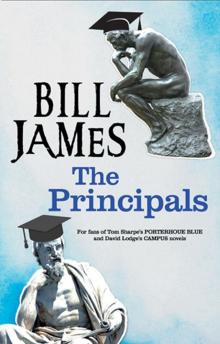 The Principals
The Principals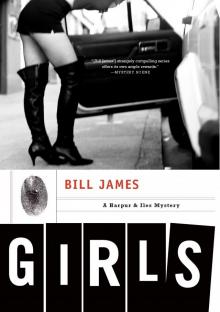 Girls
Girls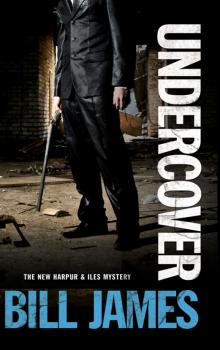 Undercover
Undercover Come Clean (1989)
Come Clean (1989) Close
Close Blaze Away
Blaze Away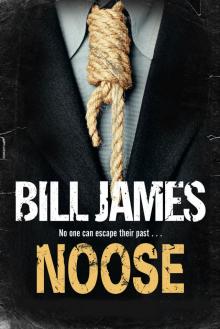 Noose
Noose First Fix Your Alibi
First Fix Your Alibi Hitmen I Have Known
Hitmen I Have Known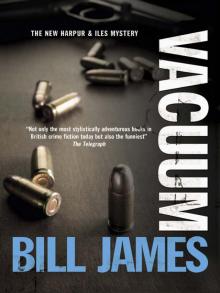 Vacuum
Vacuum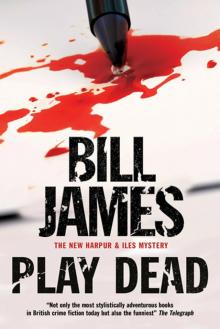 Play Dead
Play Dead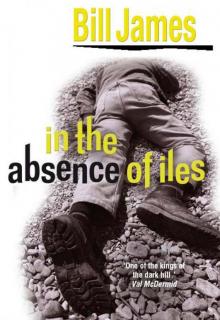 In the Absence of Iles
In the Absence of Iles The Man from the Train
The Man from the Train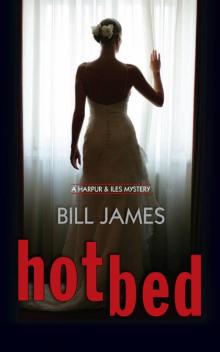 Hotbed
Hotbed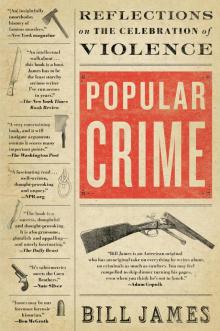 Popular Crime
Popular Crime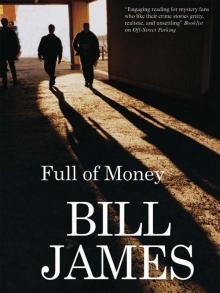 Full of Money
Full of Money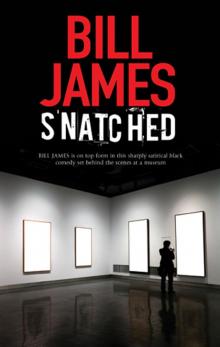 Snatched
Snatched